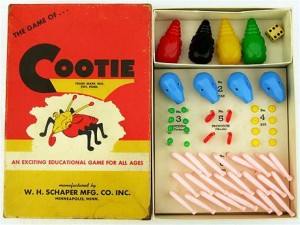The Society for HealthCare Epidemiology of America (SHEA) recently published their expert guidance for Healthcare Personnel Attire in Non-Operating-Room Settings. Admittedly the role of attire in cross-contamination remains poorly researched. As such, the article does not use the standard grading scale for evidence-based medicine. But it does give guidance, evidence where it does exist, and recommends hospital policies related to healthcare worker (HCW) attire.
Paraphrasing, SHEA recommends the following hygiene measures be voluntarily followed – with my commentary in italics:
1. Bare below the elbows (BBE). They recommend the wearing of short sleeves, no wristwatches, and no jewelry. This approach to infection control, although unsubstantiated by outcomes research, has biological plausibility and is supported by laboratory and clinical setting studies. Short sleeves aid in more complete handwashing.
Wristwatches? To be up to date, SHEA should also address cell phones in their dual role as fomite and timekeeper. Don’t forget – alcohol-based gels do not kill c.diff spores.
2. White coats. If such coats are used, the HCW should posses more than one to allow for regular laundering (institutional or otherwise). Coat hooks should be easily accessible to facilitate the removal of the coat prior to patient contact. Studies support the role of formal attire or white coats in boosting patient confidence in their physician.
As a former residency program director, I remember with chagrin the oxymoronic “white resident coat” more resembling a Jackson Pollack “Shimmering Substance” painting.
I like the coat hooks but it will be hard to overcome the so-much-more convenient, albeit improper, bedside IV pole.
3. Other HCW apparel. The article remains neutral on the wearing of neckties based on current evidence, except that they should be secured to prevent them from coming into contact with the patient or near-patient environment. Three studies show that up to 32% of physician neckties grow Staph aureus.
Eeeeuuuhh!
I’ve recently made the switch to bowties, perhaps reaching the age where it is fashionable, dignified, yet avoiding a hipster look reserved for the younger set.
4. Laundering. The recommendations say that any apparel worn at the bedside which comes into contact with the patient or patient environment is optimally to be laundered daily. For white coats, they acquiesce to a washing frequency of no less than weekly or when soiled. It is unclear if such laundering should be done on site or at home on a hot water, bleach cycle. Staph aureus contamination of hospital apparel ranged from 5% to 29%.
It would be nice if such apparel is also pressed or wrinkle-free.
5. HCW footware. Closed toes, low heels, non-skid soles. To prevent accidental exposures and for safety’s sake.
I’ll leave my Christian Louboutin’s for Saturday nights.
6. Identification. Name tags or ID badges should be clearly visible as a preferred component of HCW attire for both professional and security reasons.
7. Shared equipment, including stethoscopes, should be cleaned between patients.
Wash your hands, clean the scope. 1,2…do si do. Repeat.
8. No guidance is offered regarding other items – lanyards, nametags, cell phones, pagers, or other jewelry, but health care workers are advised to use common-sense hygiene.
Marshall Kubota, MD

